Genera
I’m in the process of creating the genus section so more plesiosaur genera will be added or updated in time.
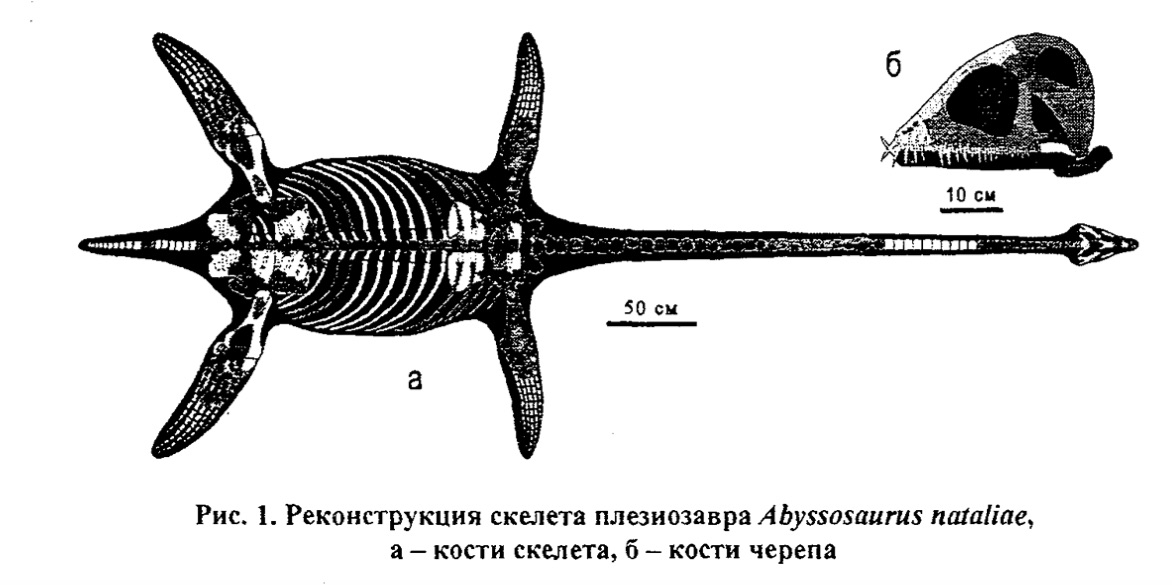
Abyssosaurus
Abyssosaurus is a derived cryptoclidid plesiosaur from the Upper Hauterivian (Lower Cretaceous) of the Menya River, Chuvashia, Russia. It was named and described in 2011 by Alexander Yu Berezin (Berezin 2011). A partial skull associated with the holotype specimen (MChEIO, no.
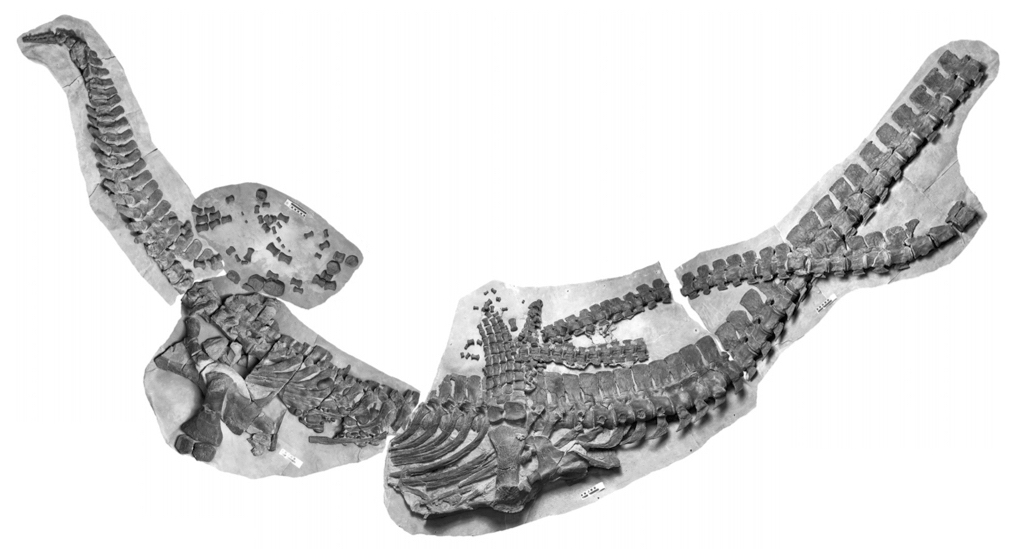
Albertonectes
Albertonectes is a very long-necked elasmosaurid from the Late Cretaceous of Alberta, Canada. The holotype specimen (TMP 2007.0110001) consists of an almost complete skeleton lacking a skull (Kubo et al. 2012). The neck contains 76 cervical vertebrae, which is a unique character of Albertonectes vanderveldei and the highest number of neck vertebrae known for any plesiosaur, surpassing the previous record-holder (Elasmosaurus) by four vertebrae.
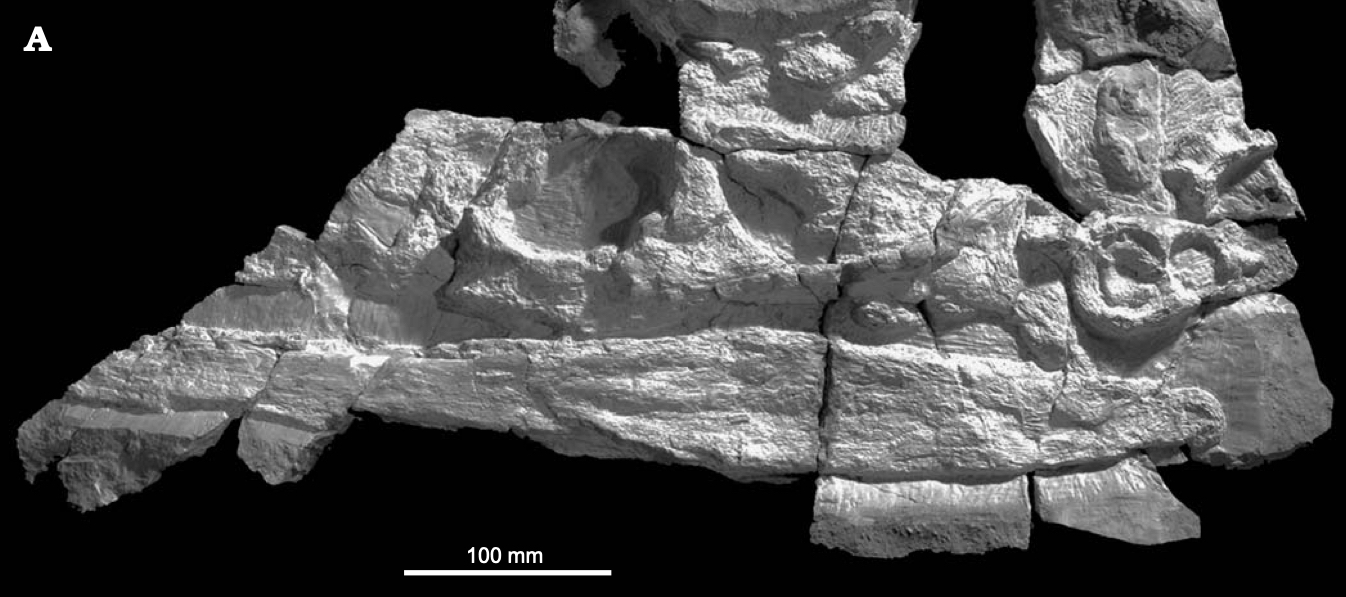
Anguanax
Anguanax is the first articulated plesiosaur ever found in Italy. It is a basal thalassophonean pliosaur from the Late Jurassic (middle Oxfordian). The type and only known specimen (MPPL 18797) of Anguanax was originally described as an indeterminate pliosaurid (Cau and Fanti 2014), but was subsequently named after reanalysis by the same authors the following year (Cau and Fanti 2015).

Apractocleidus
The genus and species ‘Apractocleidus teretipes‘ was erected by Smellie (1916) for a specimen now regarded as old-adult individual of Cryptoclidus. The specimen was collected by Alfred Leeds and acquired by the Hunterian Museum, Glasgow.

Archaeonectrus
The genus Archaeonectrus was proposed by Novozhilov (1964) for ‘Plesiosaurus’ rostratus, a species named by Owen (1865). By modern standards, Owen’s (1865) original description is rather inadequate. One notable characteristic of Archaeonectrus rostratus is the relatively small size of the limbs relative to its body.

Aristonectes
The mysterious plesiosaur Aristonectes is notable for its mouthful of pin-like teeth. A special feeding guild, the ‘trap guild’, has been proposed to accommodate Aristonectes and other plesiosaurs with similar dentition (Chatterjee and Small 1989) such as Cryptoclidus, Kimmerosaurus, and Kaiwhekea.

Attenborosaurus
Attenborosaurus is an unusual plesiosaur because it combines a long neck with a relatively large head. It is classified as a pliosaur in some classifications, but some phylogenies place it in a more basal position. The genus was introduced for ‘Plesiosaurus’ conybeari, a species originally described by Sollas (1881).

Atychodracon
The genus Atychodracon was erected by Smith (2015) to accommodate ‘Rhomaleosaurus’ megacephalus, because it is generically separarate from Rhomaleosaurus sensu stricto (Smith and Dyke 2008). A. megacephalus is closely related to Eurycleidus and some authors have regarded A.
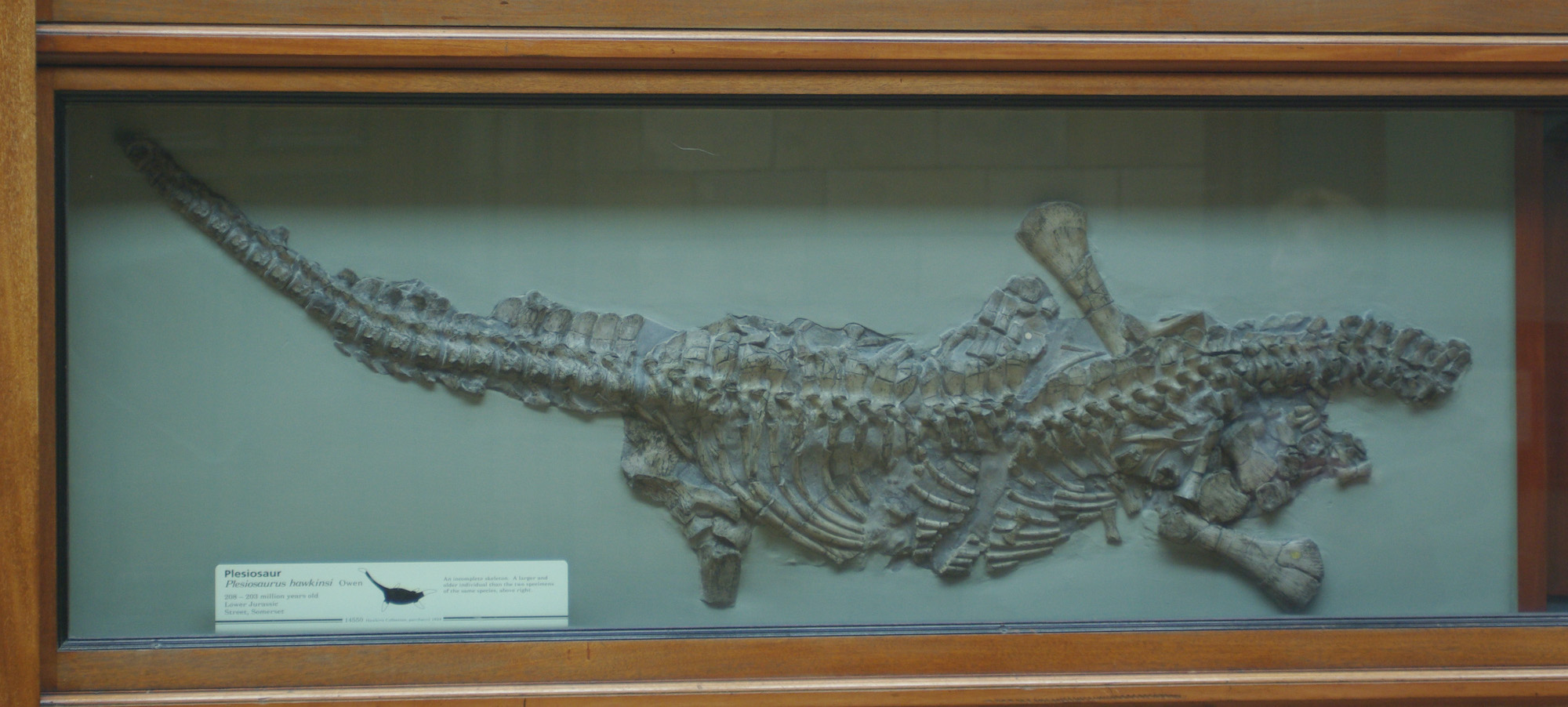
Avalonnectes
Avalonnectes is a small-bodied basal rhomaleosaurid. Avalonnectes was named by Benson, Evans and Druckenmiller (2012) for a partial skeleton including the rear part of the skull from the lowermost Jurassic of Street, Somerset, UK.
Bishanopliosaurus
Under construction
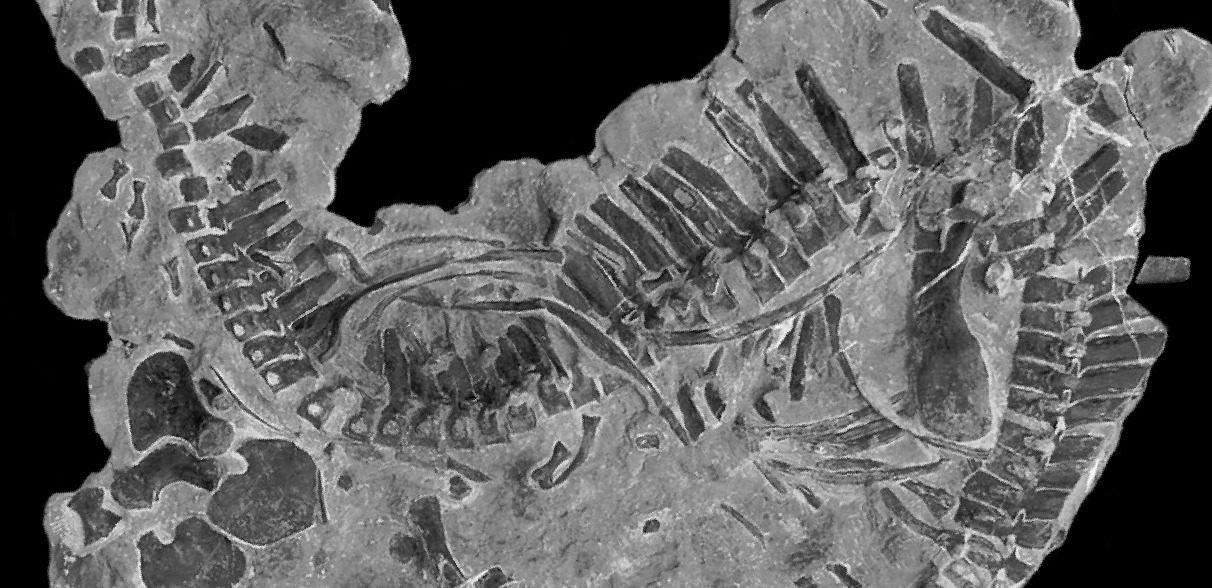
Bobosaurus
Bobosaurus shares many characteristics with plesiosaurs and is one of a number of recently discovered derived sauropterygians that bridge the gap between basal sauropterygians and plesiosaurians.
The name honours the person who found the skeleton, Mr Roberto “Bobo” Rigo (Dalla Vecchia 2006).
Borealonectes
Under construction

Brancasaurus
Under construction
Skeleton of Brancasaurus in side view. From Sachs et al. (2016)
Skull of Brancasaurus in dorsal and lateral view, and showing the tip of the snout (C) in ventral view (from Wegner 1914)
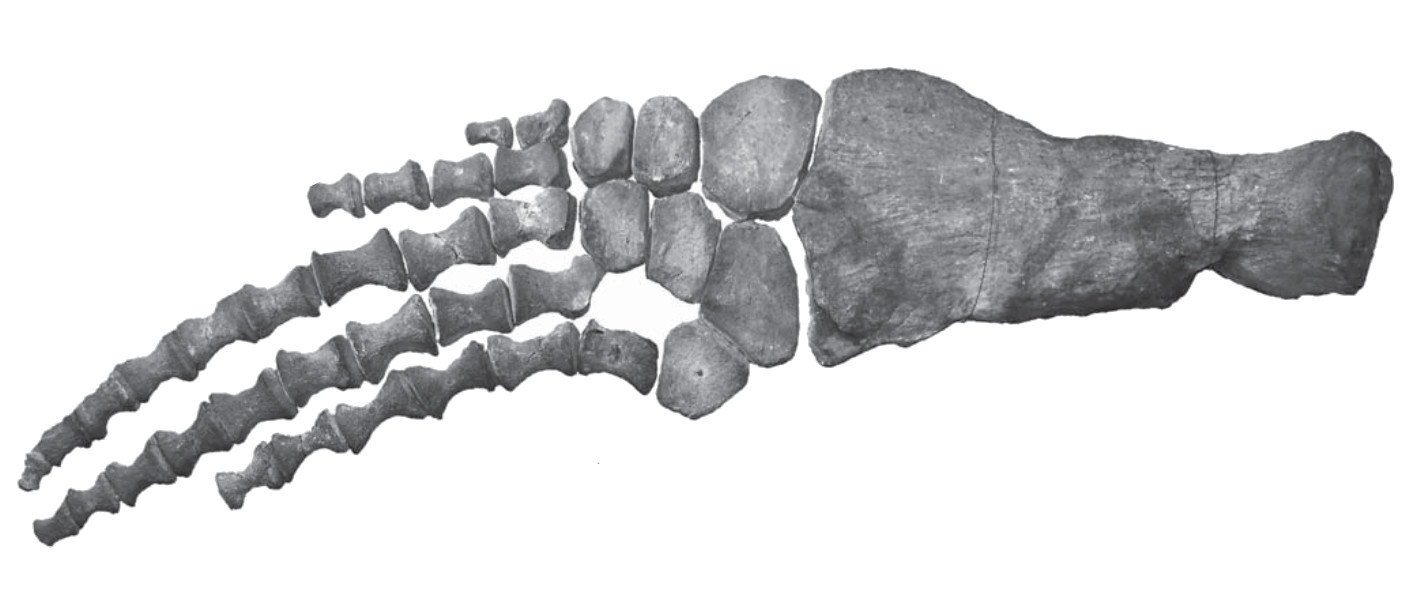
Colymbosaurus
Colymbosaurus is a colymbosaurine (derived cryptoclidid) from the Late Jurassic of the UK and Svalbard, Norway. Two valid species are known, C. megadeirus from the UK, and C. svalbardensis from Svalbard, Norway.
Cryonectes
Under construction

Cryptoclidus
Cryptoclidus, often wrongly spelled ‘Cryptocleidus’ after Andrews (1909), is a moderately sized plesiosaur up to 3 metres long. It is known from a large number of individual specimens from the Oxford Clay Formation. Fossils of Cryptoclidus are relatively common, and provide a complete ontogenetic sequence from very young to old adult individuals.
Djupedalia
Under construction

Elasmosaurus
Elasmosaurus is one of the most widely recognised plesiosaur names and has become a stereotype for all elasmosaurids. However, it is relatively poorly known. The type and only known specimen of Elasmosaurus platyurus (ANSP 10081) includes the tip of the snout, occipital condyle, and the majority of the vertebral column.
Eurycleidus
Under construction
Gallardosaurus
Under construction
Gronausaurus
‘Gronausaurus‘ was named in 2013 (Hampe 2013). It is now regarded as a junior synonym of Brancasaurus (Sachs et al. 2016).
Under construction
Hastanectes
Under construction
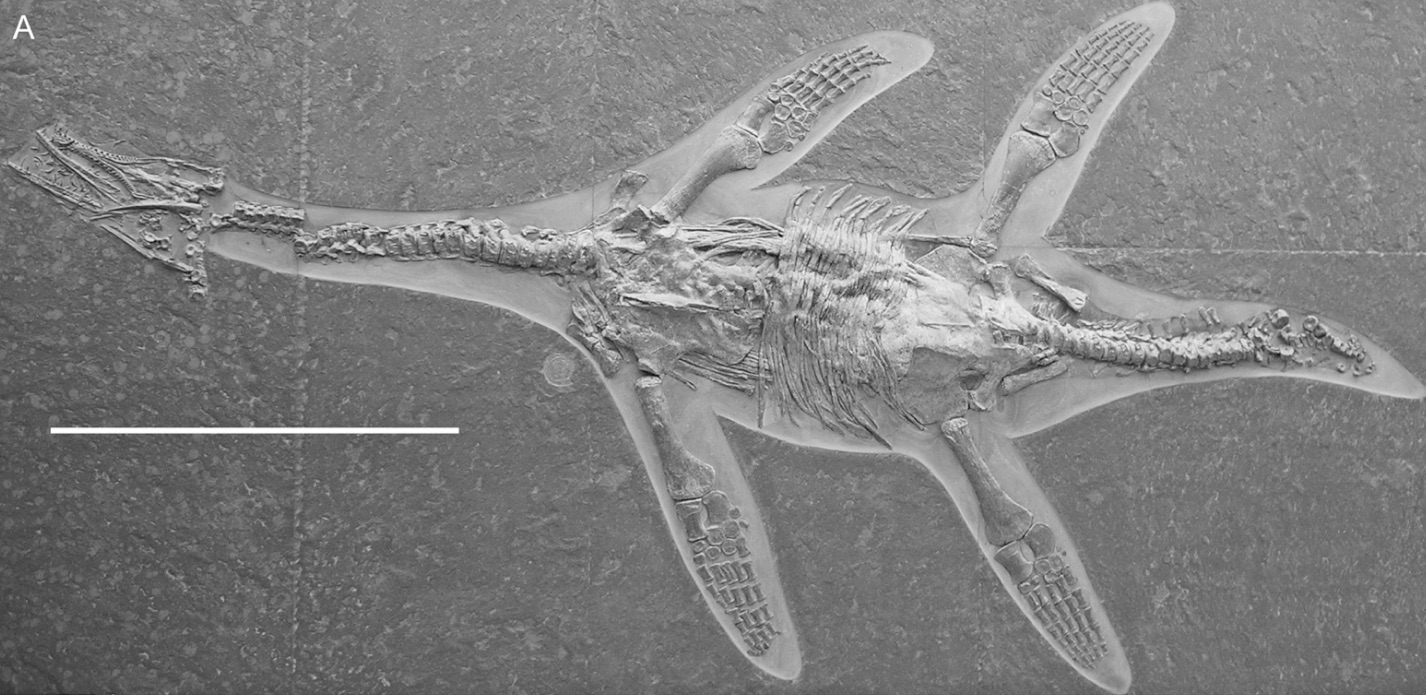
Hauffiosaurus
Hauffiosaurus is a basal pliosaurid known from the Lower Jurassic (Toarcian) of the UK and Germany. Hauffiosaurus is a medium to large sized plesiosaur (H. zanoni = 3.4 m, H.
Hydrorion
Under construction
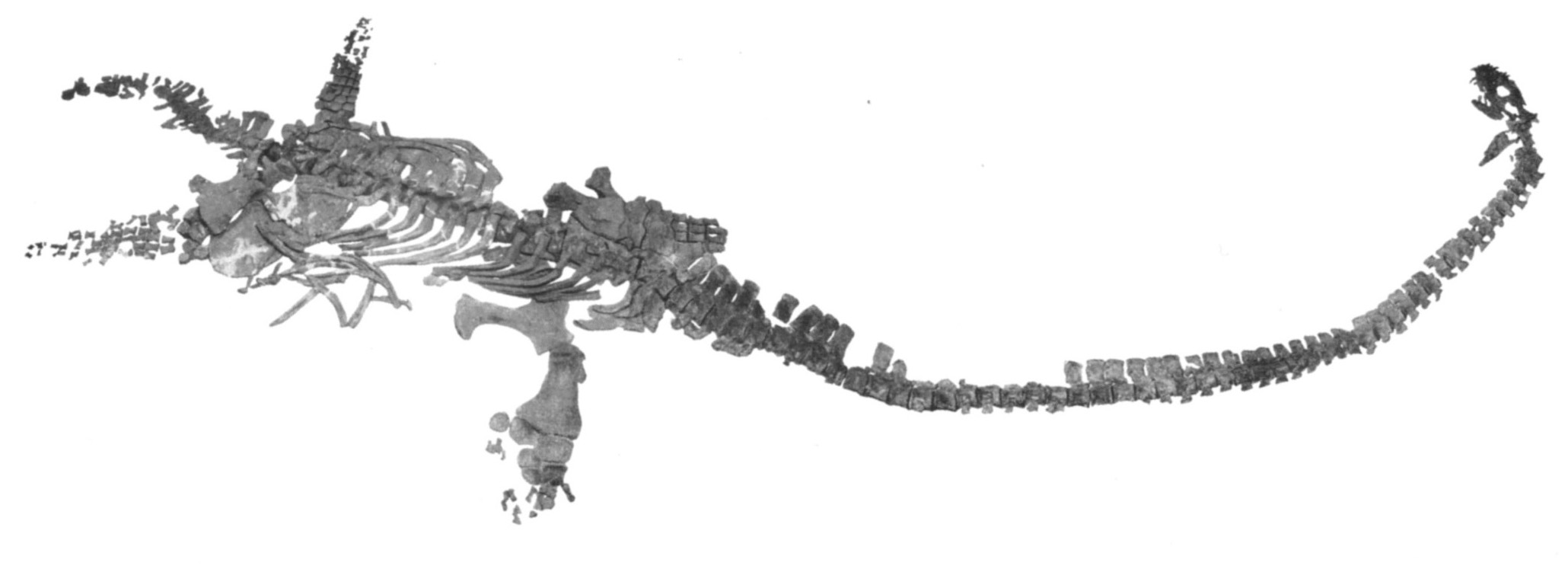
Hydrotherosaurus
Hydrotherosaurus is a long-necked elasmosaurid from California, USA. It is represented by one of the most complete elasmosaurid skeletons ever discovered, so Hydrotherosaurus is one of the best known members of this family. The almost complete type skeleton of Hydrotherosaurus was discovered in the Panoche Hills by Mr.

Kimmerosaurus
Kimmerosaurus is a poorly known cryptoclidid plesiosaur known only from skull and neck material (Brown 1981, Brown et al. 1986). It differs from other plesiosaurs in the large number of needle-like teeth in its jaws, and in the form of its teeth, which are completely smooth and lack the longitidinal ridges present in other plesiosaurs.

Kronosaurus
Due to its large size and ferocious appearance, Kronosaurus is one of the most famous plesiosaurs. The iconic skeleton referred to Kronosaurus on display in the Museum of Comparative Zoology in Harvard is nicknamed ‘plasterosaurus’ because so much of it is reconstructed in plaster.

Leptocleidus
Lower Cretaceous plesiosaurs are rare, so Leptocleidus is important because it fills a gap in the fossil record of plesiosaurians. Leptocleidus was once considered to be a late surviving member of the family Rhomaleosauridae but it has recently been reidentified as a close relative of polycotylids.
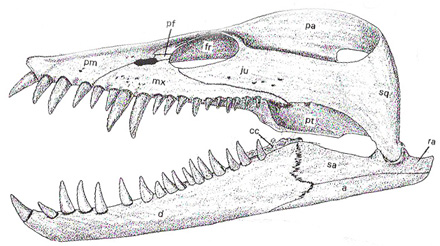
Libonectes
Libonectes was erected for ‘Elasmosaurus morgani’. The pectoral girdle and a forelimb of the holotype are figured (most recently by Welles 1962, fig. 12) but now lost (Carpenter 1999). Libonectes morgani (Welles 1949) is the type and only species.

Liopleurodon
Liopleurodon is a pliosaur that hardly needs introduction since appearing as the villain in the BBC’s ‘Walking with Dinosaurs’ TV series. This led to popular misconceptions about the size of Liopleurodon, which is known to have reached adult sizes in the region of seven metres long, nowhere near the gargantuan 25m estimate proposed by the series and later perpetuated elsewhere.
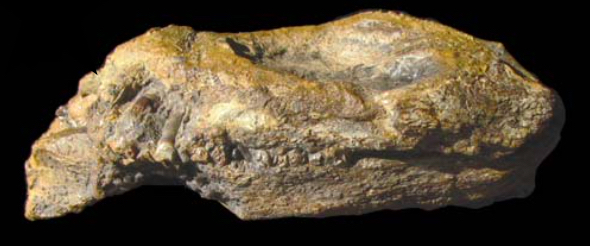
Lusonectes
Lusonectes is a poorly known microcleidid the Toarcian (Lower Jurassic) of Portugal. It is known from a single holotype specimen (MG33), a partial skull in the Museu Geológico, Lisbon, Portugal. It was described and named by Smith et al.
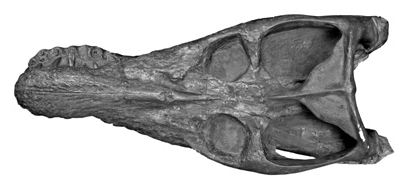
Macroplata
Macroplata has a unique character in its pectoral girdle: a distinct notch on the posterior border of the coracoid. The number of rib facets varies along the cervical vertebral column (27 in total) there is only one in the anterior vertebrae but two in the posterior ones.
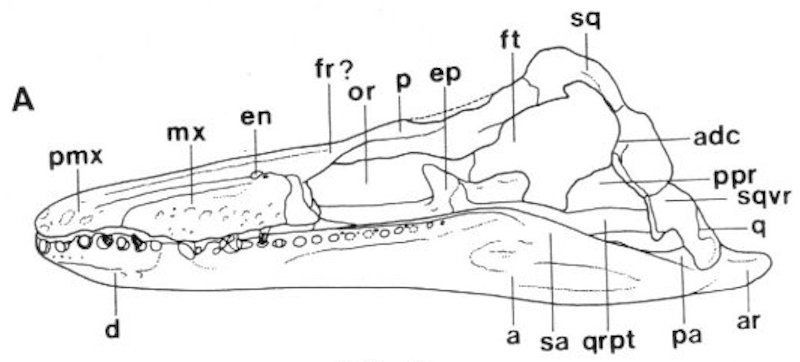
Maresaurus
M. coccai (Gasparini 1997) type material: MOZ 4386 V articulated skull and mandible, atlas-axis and first cervical vertebrae. From the upper part of the Los Molles Formation, Cuyo Group, Emileia giebeli and Emileia multiformis subzone.
Skull of Maresaurus in lateral, dorsal and ventral view.

Marmornectes
Marmornectes is a pliosaur with a long and narrow snout from the Oxford Clay. It was described and named by Ketchum and Benson (2011a). The type and only specimen (BEDFM 1999.201) comprises a substantially complete skeleton including a partial skull.
Megalneusaurus
Under construction
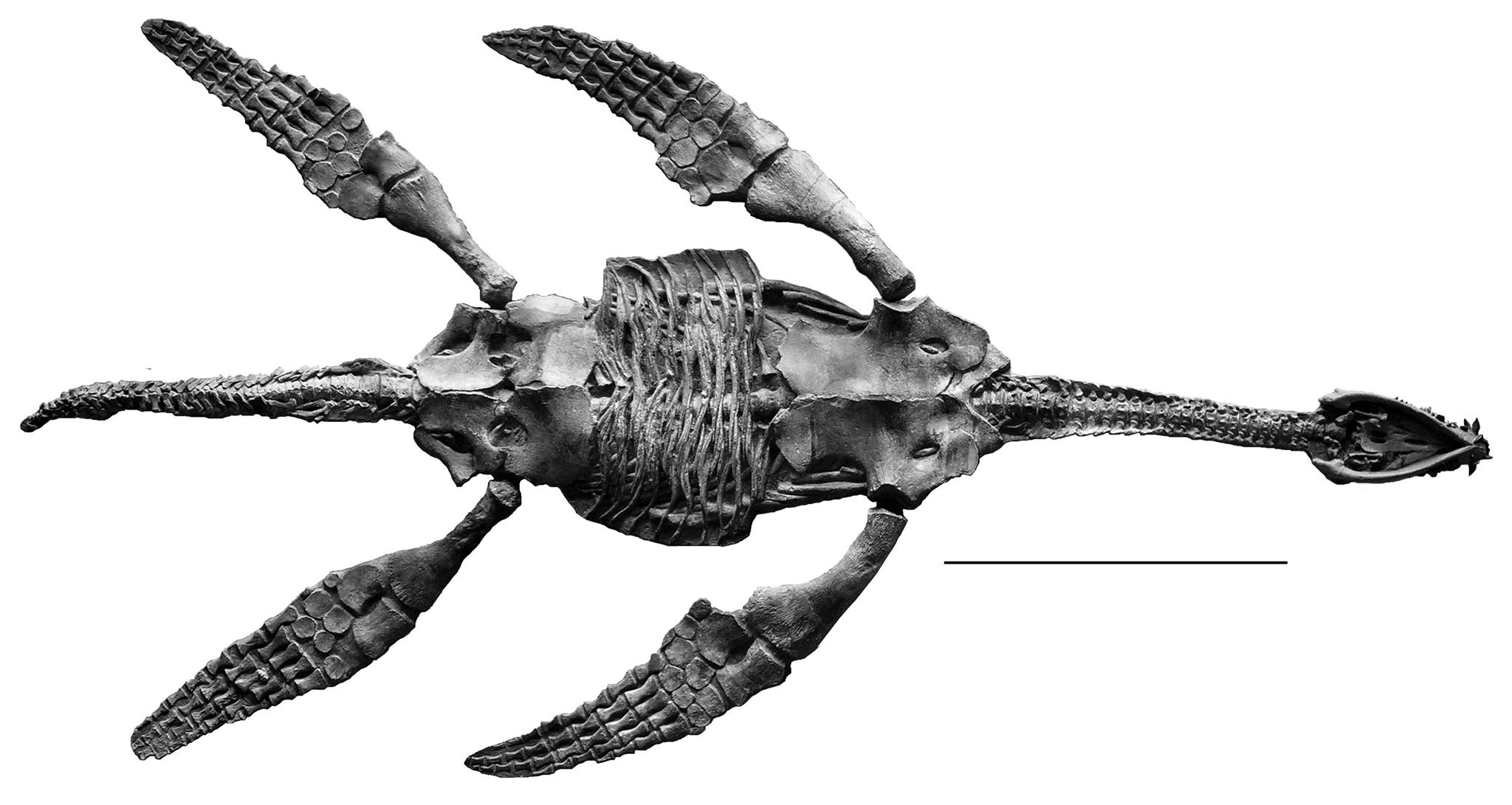
Meyerasaurus
M. victor was originally described and figured by Fraas (1910). Historically, M. victor has been regarded as a species of Rhomaleosaurus and is often associated in the literature under the defunct name ‘Thaumatosaurus’.

Microcleidus
Microcleidus is a medium (4.27 m) to large (5.03 m) plesiosauroid with a small head and a long neck containing 38–39 cervical vertebrae.
Watson (1909) erected Microcleidus to accommodate fossil material belonging to ‘P.’ homalospondylus and ‘P.’ macropterus (Watson 1911).
Monquirasaurus
Monquirasaurus is a giant pliosaurid from Colombia, South America. Originally named by Hampe (1992) as a species of Kronosaurus (K. boyacensis), the skeleton was later allocated to the new genus Monquirasaurus by Noè and Gómez-Pérez (2021).

Morturneria
The taxon was originally named ‘Turneria seymourensis‘ by Chatterjee and Small (1989) but this genus was preoccupied and so Chatterjee and Creisler (1994) later revised the name to Morturneria seymourensis. The holotype specimen is TTU P 9219, an incomplete skull and mandible plus associated cervical vertebrae, from the Lopez de Bertodano Formation of Seymour Island, Antarctica.

Muraenosaurus
Under construction
Restoration of the skeleton of Muraenosaurus in lateral view. From Andrews 1910.
Posterior cervical (neck) vertebra of Muraenosaurus in lateral and posterior view. From Andrews (1910).
Dorsal vertebra of Muraenosaurus in anterior view.
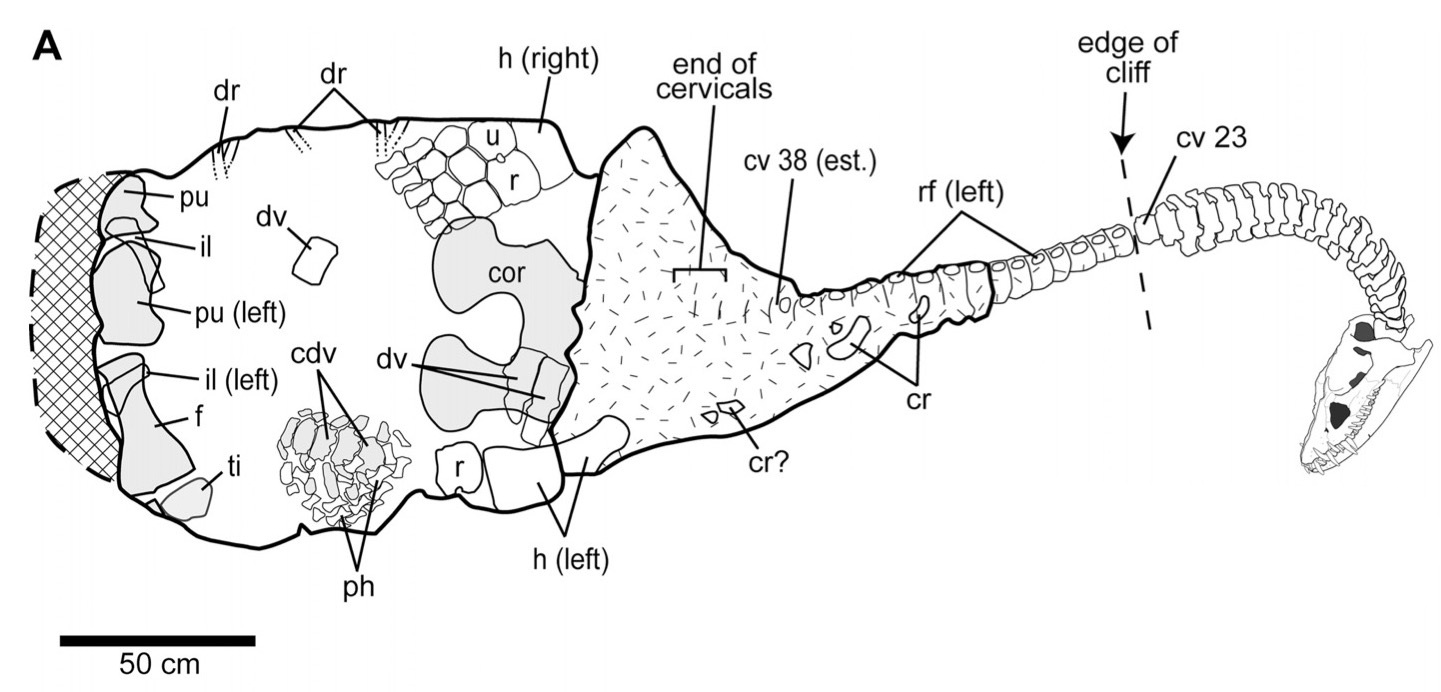
Nakonanectes
Nakonanectes is a small elasmosaurid plesiosaur from the Bearpaw Shale of Montana, USA. It is known from a single moderately complete specimen including a particularly fine skull. It has a relatively short neck for an elasmosaur consisting of ‘only’ 39-42 neck vertebrae.

Occitanosaurus
‘Occitanosaurus’ was described by Sciau et al. (1990) and Bardet et al. (1999). The genus name was erected for ‘Plesiosaurus’ tournemirensis by Bardet et al. (1999). The taxon was originally regarded as an early elasmosaurid but is now considered a member of the Microcleididae.

Ogmodirus
The type skeleton of ‘Ogmodirus’ was collected in 1909 by C. Boyce from the upper Greenhorn Limestone Formation (Lower Turonian, Late Cretaceous) of Cloud County (near Aurora), Kansas (Storrs 1999, Schumacher and Everhart 2005). The specimen, KUVP 441, is a partial skeleton consisting of partial vertebral column (51 cervical vertebrae, 18 caudal vertebrae), limb, and girdle elements.
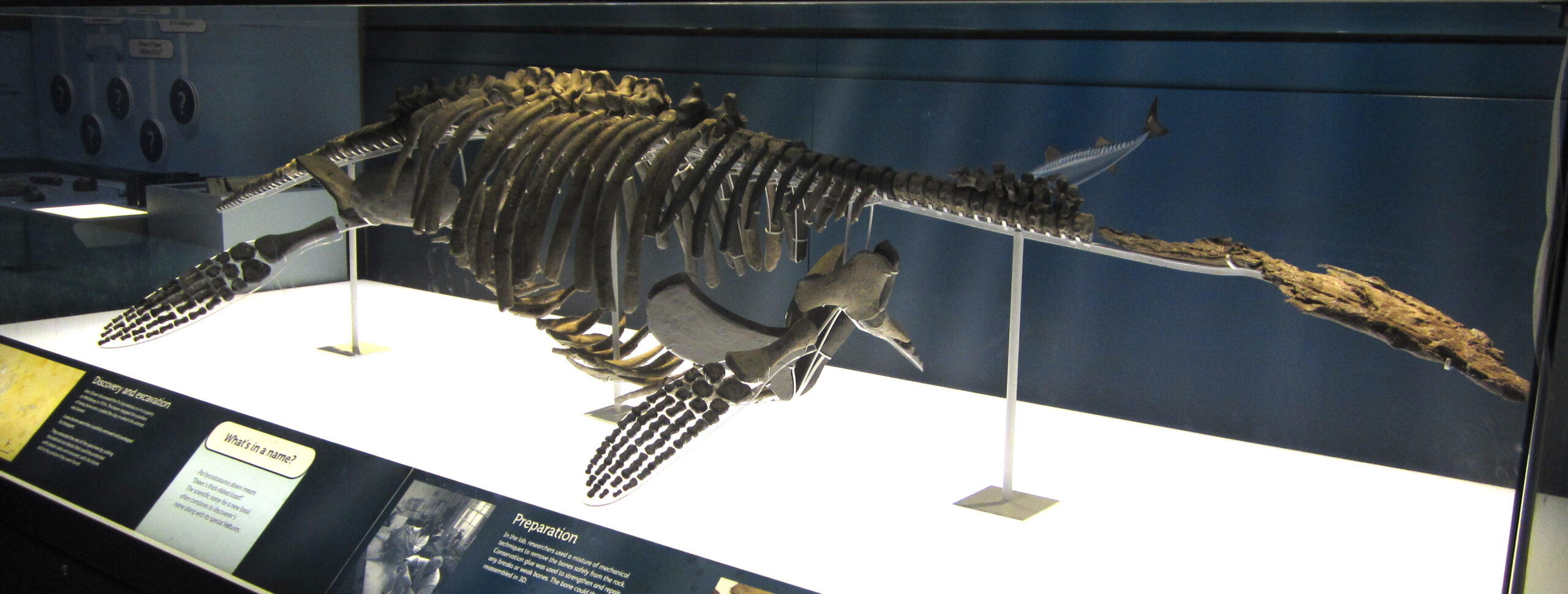
Pachycostasaurus
Pachycostasaurus is approximately 3.1 meters long. Its rib cage and vertebrae exhibit thickened bone (Cruickshank et al. 1996) a condition termed pachyostosis. This heavy ossification is unusual in plesiosaurs (another exception may include Kronosaurus), although it is common in basal sauropterygians, especially pachypleurosaurs.
Pantosaurus
Under construction

Peloneustes
Peloneustes is one of several pliosaur genera from the Oxford Clay Formation in the UK. It is one of the better known pliosaurs from this horizon, represented by 12 nearly complete skulls and several skeletons. It is also the most abundant pliosaur from the Peterborough Member of the Oxford Clay Formation (Ketchum and Benson 2011b).

Plesiosaurus
Plesiosaurus was the first plesiosaur discovered and named (De la Beche and Conybeare 1821). The first 1821 description was based on partial remains so the anatomy of Plesiosaurus – particularly the identity of the isolated bones and how they articulated together – involved some guesswork.

Pliosaurus
Under construction
Skull of Pliosaurus kevani in right lateral view. From Benson et al. (2013).
The ‘Westbury Pliosaur 1’ specimen of Pliosaurus brachyspondylus, skull on display in the Bristol Museum and Art Gallery. Photo by Chris Crump.
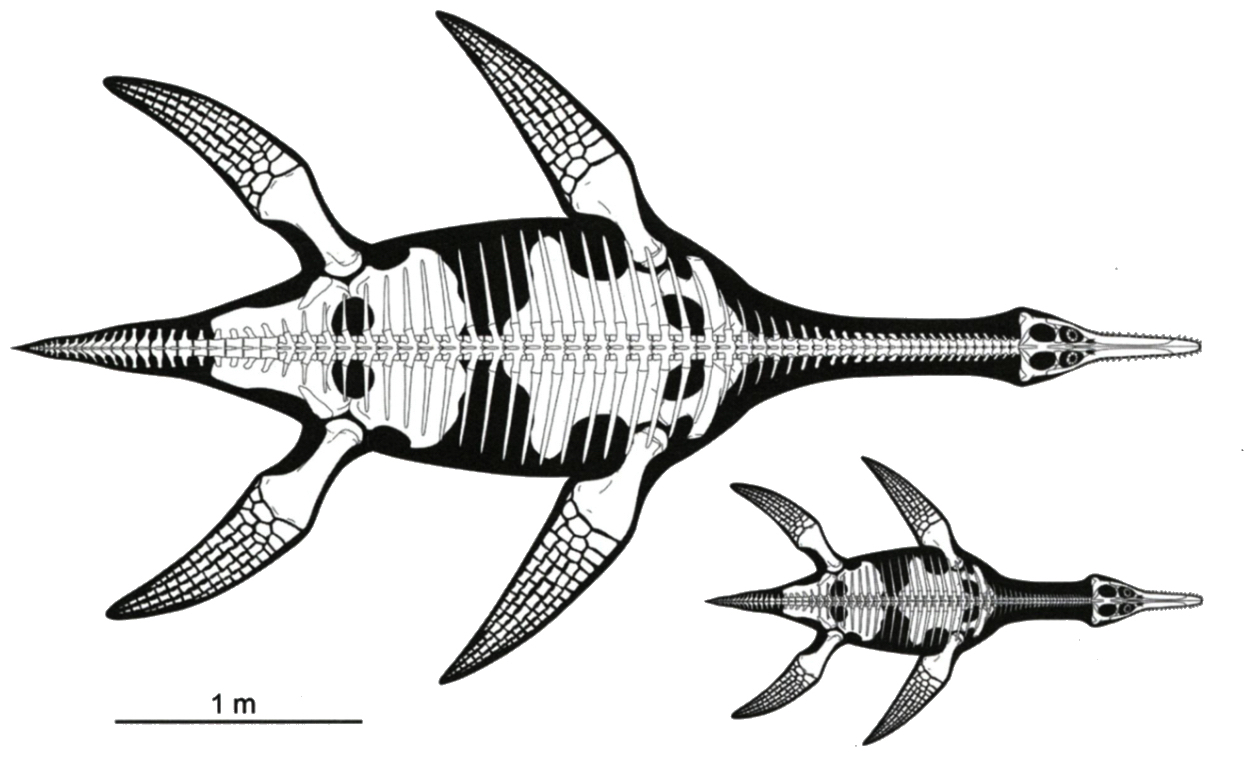
Polycotylus
Polycotylus latipinnis was the first short-necked plesiosaur to be recognised in North America (Carpenter 1996), and the first polycotylid to be described and named (Cope 1869). It was established in the same volume that coined the name Elasmosaurus and contained the infamous ‘head on the wrong end’ reconstruction (Cope 1869).

Rhomaleosaurus
Rhomaleosaurus is the largest known Lower Jurassic pliosaur and was the top predator in early Jurassic marine ecosystems. It has a reinforced skull to help resist torsion and a ferocious set of teeth, a combination of characters perfect for snatching and killing cephalopods, fish, and other marine reptiles.

Simolestes
Simolestes has variously been allied with the Pliosauridae and the Rhomaleosauridae. The most noticeable difference between Simolestes and the other pliosaur taxa from the Oxford Clay (Liopleurodon, Peloneustes, Pachycostasaurus), is its much shorter snout and mandibular symphysis, a character is shares with the Rhomaleosauridae.
Spitrasaurus
Under construction
Stenorhynchosaurus
Under construction
Sthenarosaurus
Under construction
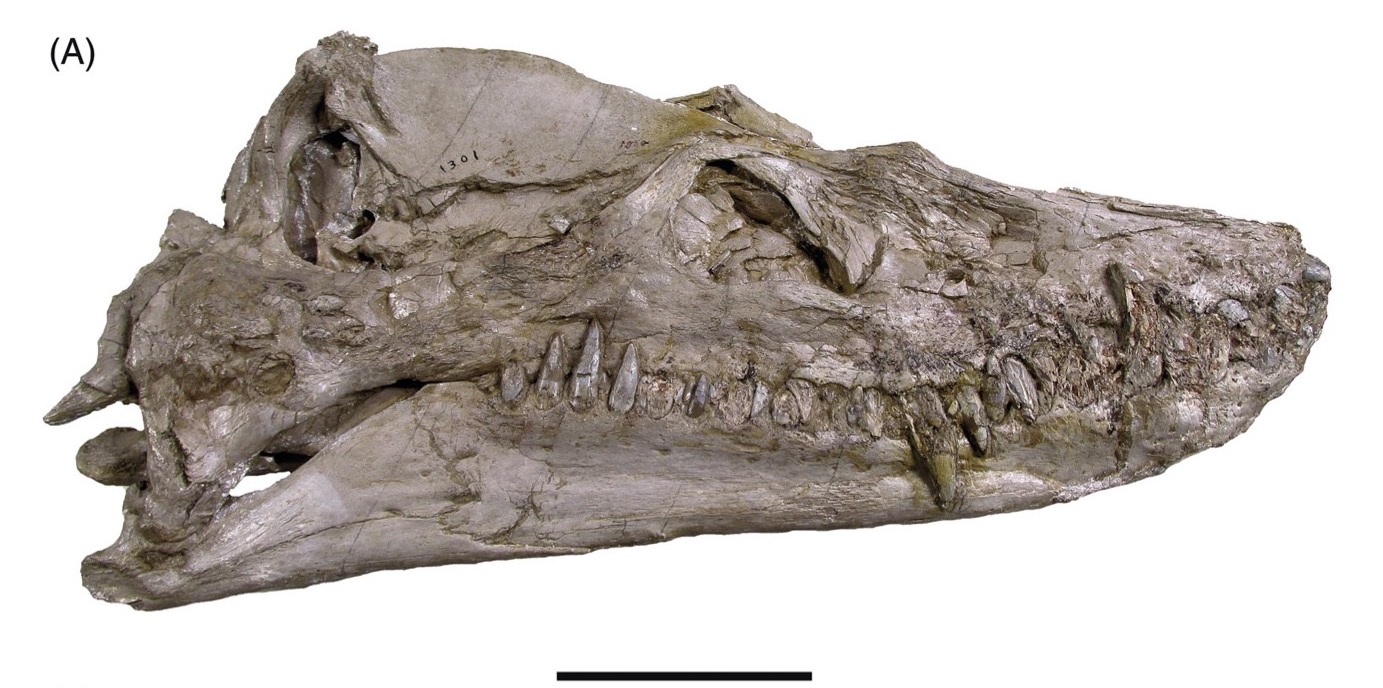
Styxosaurus
The holotype specimen (KUVP 1301) of Styxosaurus is an articulated skull and anterior portion of the neck. It was found in the Niobrara Chalk near Hell Creek, Logan County, Western Kansas in 1890. It was described later that year as a new species Cimoliosaurus snowii by Williston (1890a) (and Williston 1890b), who subsequently (Williston 1906) referred the species to Elasmosaurus.
Tatenectes
Under construction

Thalassiodracon
The species Plesiosaurus hawkinsii was introduced in 1838 for a small plesiosaurian from Street, Somerset. The new genus name Thalassiodracon was erected decades later following an examination of a referred skull in Cambridge (CAMSM J.46986).

Thalassomedon
The holotype of Thalassomedon was discovered by R. L. Landberg in 1939 in Baca County, Colorado. Thalassomedon has a short and deep atlas-axis and 62 cervical vertebrae, and there is no pectoral or pelvic bar in the adult condition (Carpenter 1999).
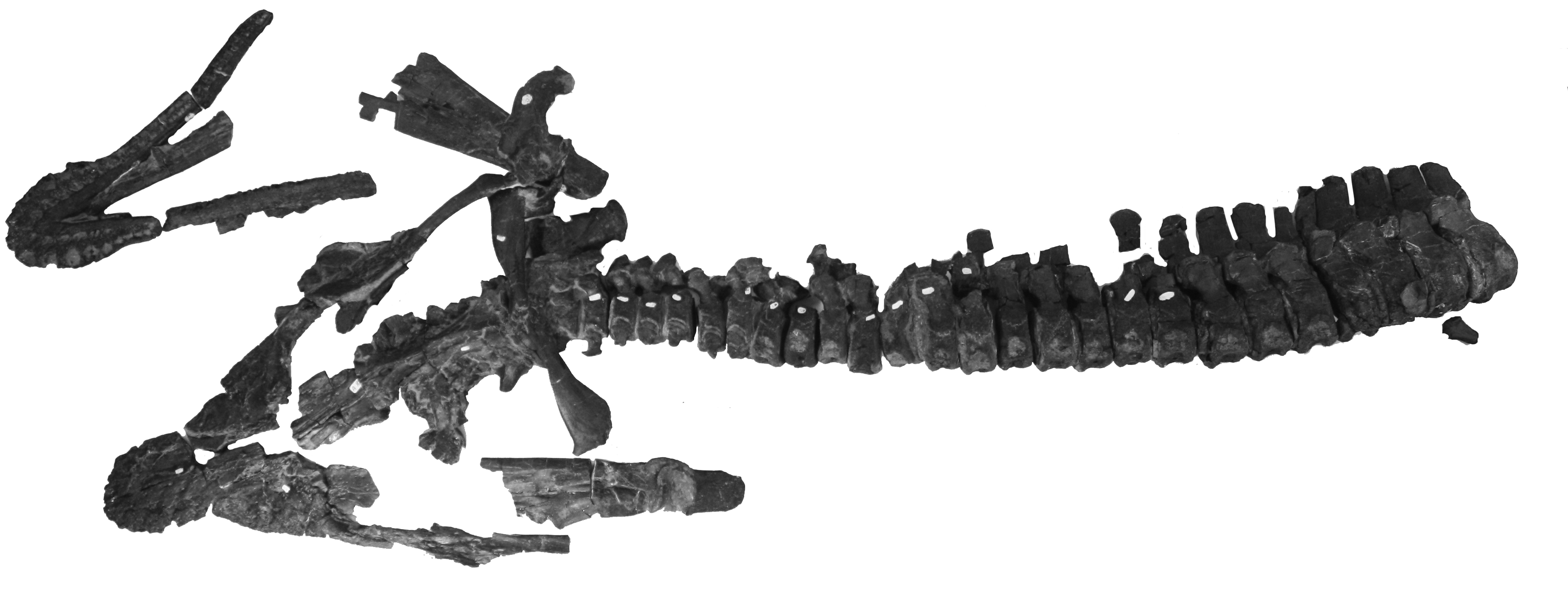
Thaumatodracon
Thaumatodracon is a relatively large rhomaleosaurid from the Lower Jurassic (Sinemurian) of Lyme Bay – the coast between Lyme Regis and Charmouth – UK. The holotype specimen (NLMH 106.058) is an almost complete skull and cervical (neck) series.

Tricleidus
Tricleidus is a cryptoclidid from the Oxford Clay Formation of the UK. The holotype specimen (NHMUK R 3539) consists of disarticulated elements including most of skull and half the postcranium, from the Kosmoceras jasoni – Peltoceras athleta zones from the lowest deposits of the Oxford Clay Formation.
Vectocleidus
Under construction
Vectocleidus material on display in the Dinosaur Isle Museum, Isle of Wight, UK.
Vinialesaurus
Under construction
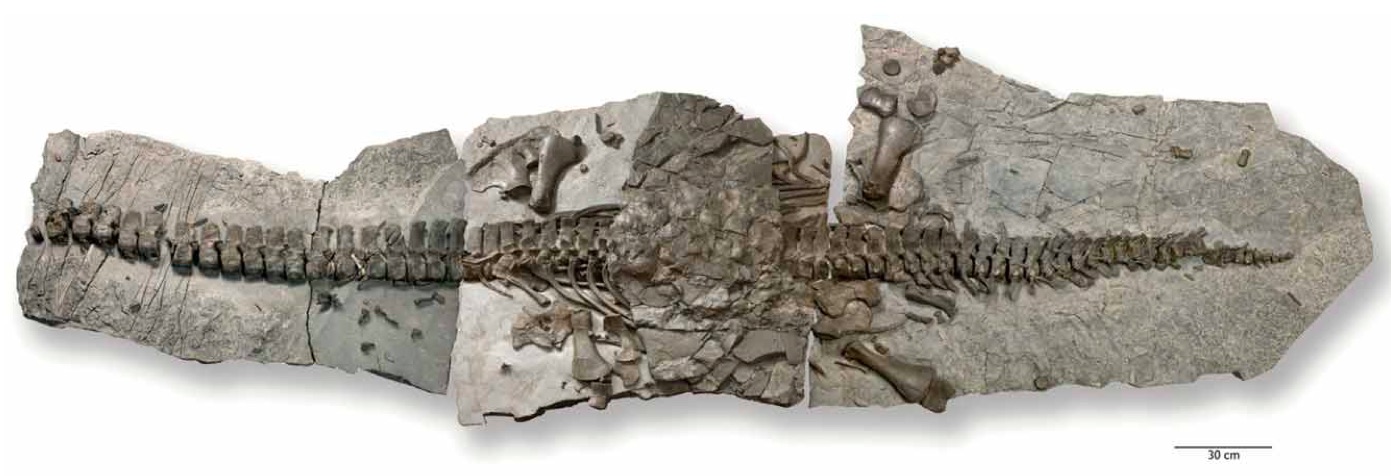
Westphaliasaurus
Under construction
Skeleton of Westphaliasaurus. The central slab of the skeleton was awaiting preparation at the time of this photograph, but was subsequently prepared. From Schwermann & Sander (2011).
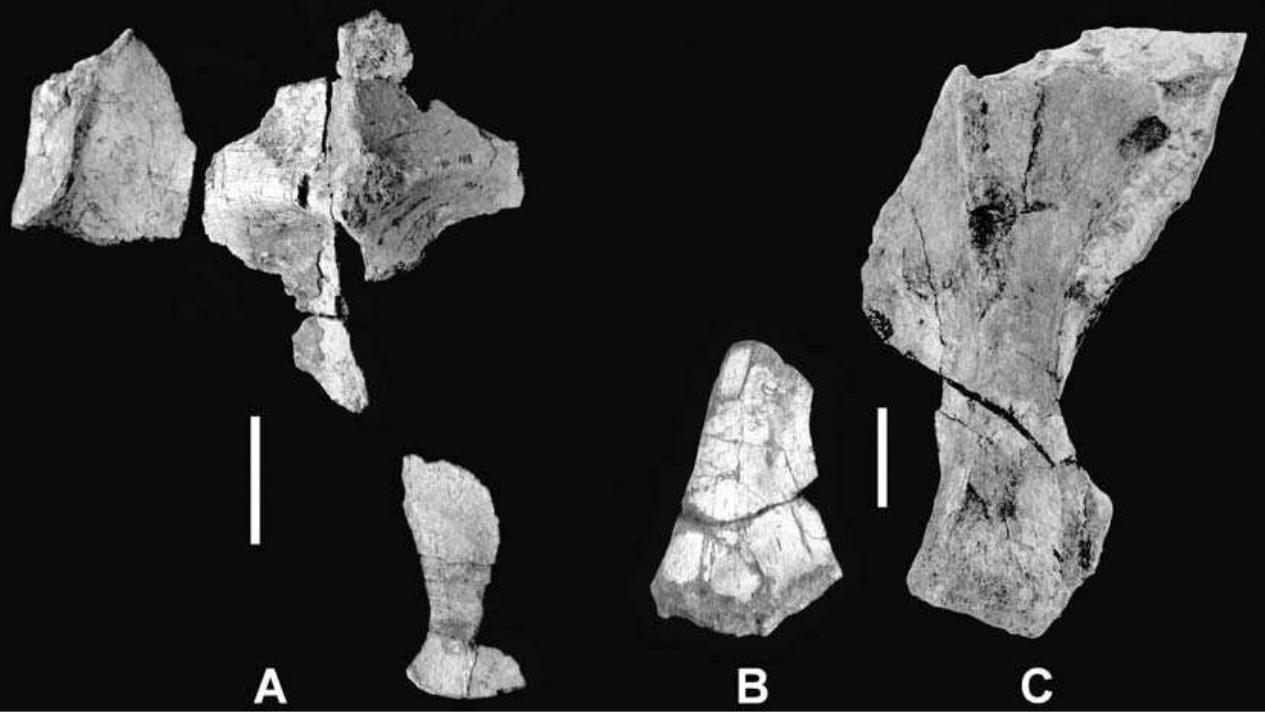
Woolungasaurus
Sachs (2004) regarded ‘Woolungasaurus‘ as a junior synonym of Styxosaurus and assigned the type species (‘W. glendowerensis‘) to that genus under the new combination ‘Styxosaurus glendoweresnis‘.
Yuzhoupliosaurus
Under construction




